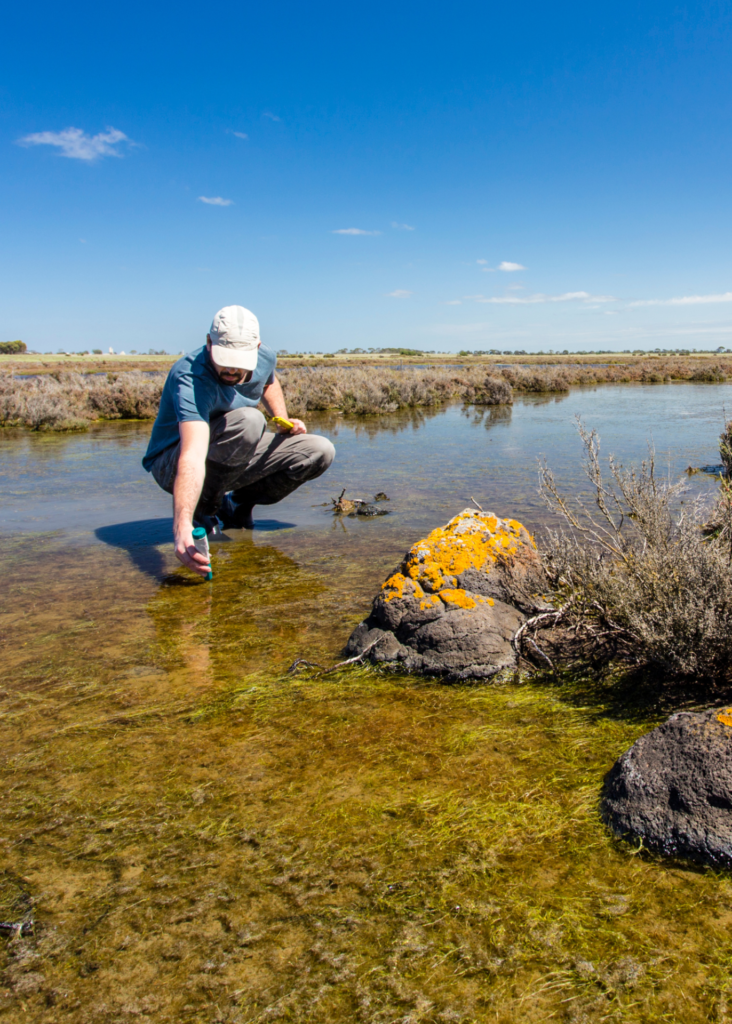Think This Improvement Area is Right for Your Lake?
Please answer the following questions:
☐ I have noticed invasive species establishing in/around the lake
☐ There has been an increase in human activity in/around the lake
☐ I have noticed a change in the species that are present in/around the lake
☐ I have noticed one particular species taking over one or multiple area(s) of the lake
If you've answered YES to any of these questions, the Invasive Species Improvement Area may be beneficial to your lake!
What Are Invasive Species?
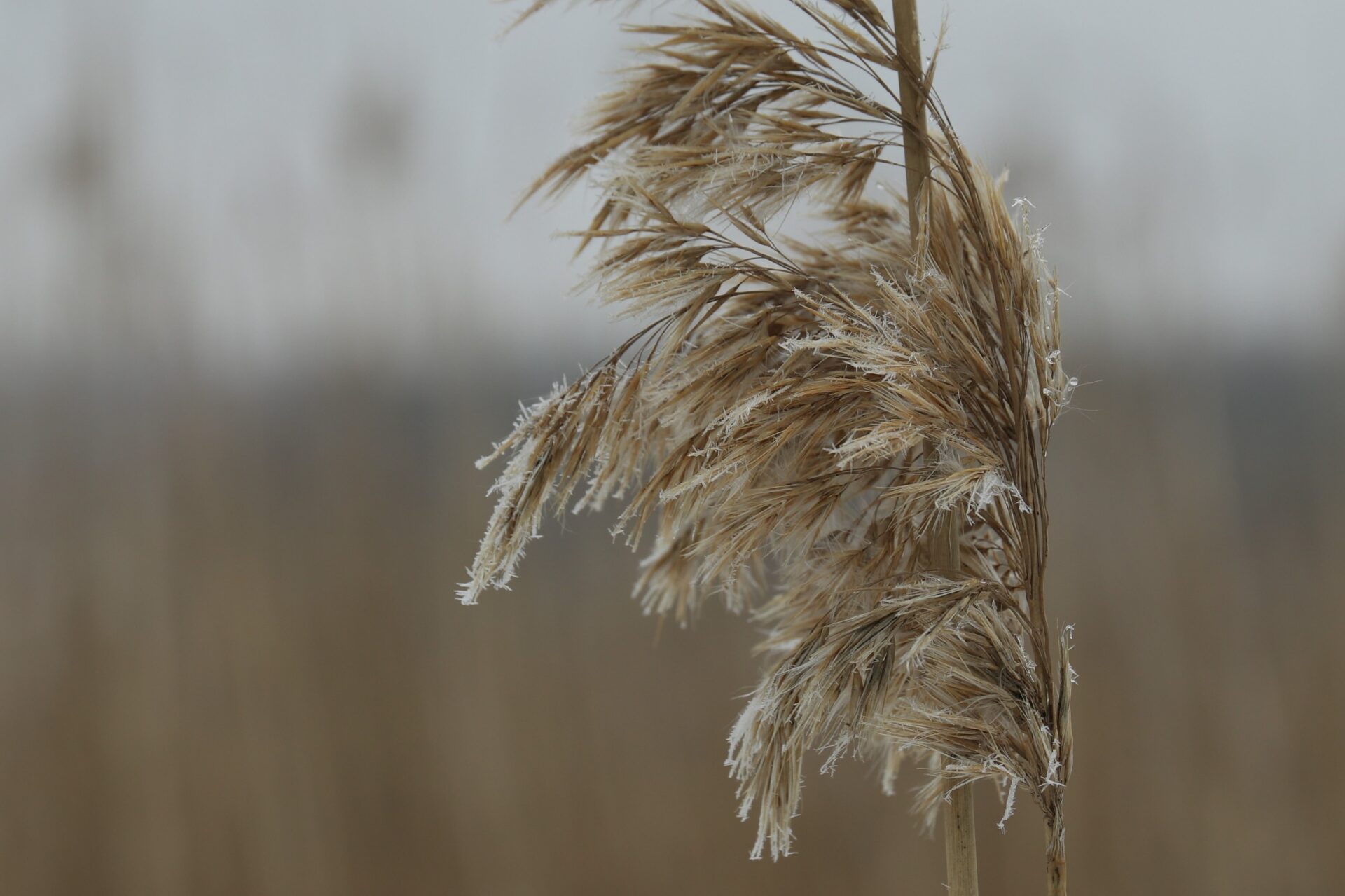
Invasive species are non-native plants or animals that have been introduced to an area that can out-compete with native species for space and resources which typically have financial impacts to the surrounding ecosystem.
Non-native species are species that have not been historically recorded in an area that have been introduced there either naturally (wind, animals, etc.) or via humans either by accident or intentionally via gardens or use as bait.
Native species are organisms that have been historically found in the area and are linked to other species in the ecosystem in some way such as by using it for habitat or food.
Sources of Invasive Species
Historic Introductions
Invasive species in North America were often brought over by early European settlers that were unaware of the damage these species would eventually cause to local biodiversity. Some of these species included lilac bushes and European Starlings.
Commercial Introductions
More recently, invasive species have become more introduced via commercial routes such as:
- Cargo shipments over air, land, and water
- Live food trades
- Exotic pet trades
- Contaminated fishing gear
- Boat ballast water
Individual Introductions
Nowadays, people are often not aware of how quickly an invasive species can establish themselves and how harmful some individual actions can be. In these cases, invasives are often introduced through:
- Release of unwanted pets or aquarium plants
- Use of non-native plants in ornamental gardening
- Accidental spread of seeds or plant fragments on clothing or shoes when hiking
- Uncleaned boats and vessels
- Release of species from live wells
- Boat ballast water
Why Are Invasive Species Undesirable?
Invasive species have the ability to overtake areas if not managed effectively. Invasive species can grow in large, dense patches which prevent the growth of other species in the area. Eventually, this can create a monoculture and lower an area’s biodiversity significantly.
Invasive species can also make life for other species much more difficult by cutting off natural pathways and travel routes that are important to their lifecycle. This can be seen between invasive Phragmites (Phragmites australis subsp. australis) and the Blanding's Turtle (Emydoidea blandingii).
Invasive wildlife can also cause changes in habitat and food availability, food webs, and alter relationships between species. An example of this can be seen between Zebra Mussels (Dreissena polymorpha) and other native mussel or clam species such as the Purple Wartyback Mussel (Cyclonaias tuberculata).
Purple Wartyback Mussels image by Stephanie Muckle. Retrieved from Ontario Nature
Invasive Species: From Prevention to Control
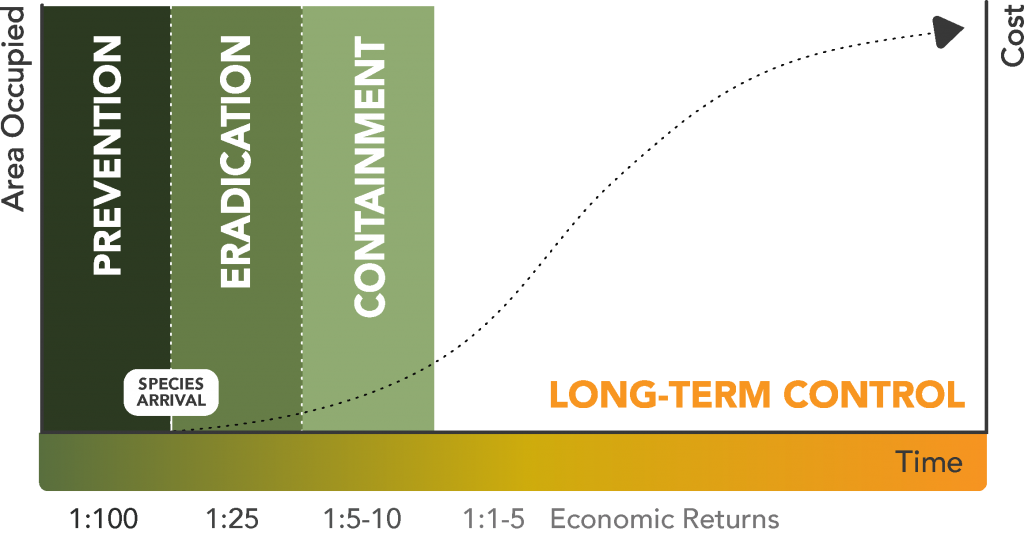
Image courtesy of the Invasive Species Centre.
When managing invasive species, time is money (literally!). Over time, the management of invasive species can become very expensive, and once these species are established it is impossible to eradicate them from the ecosystem.
It is important to invest time and money into the prevention of invasive species BEFORE they are able to establish themselves, so that we aren't trying to catch up to them later.
So, save your time AND your money by ensuring you are doing your part to prevent the establishment and spread of invasive species!
Top 3 Invasive Species Likely in Your Lake
Round Goby
Neogobius melanostomus
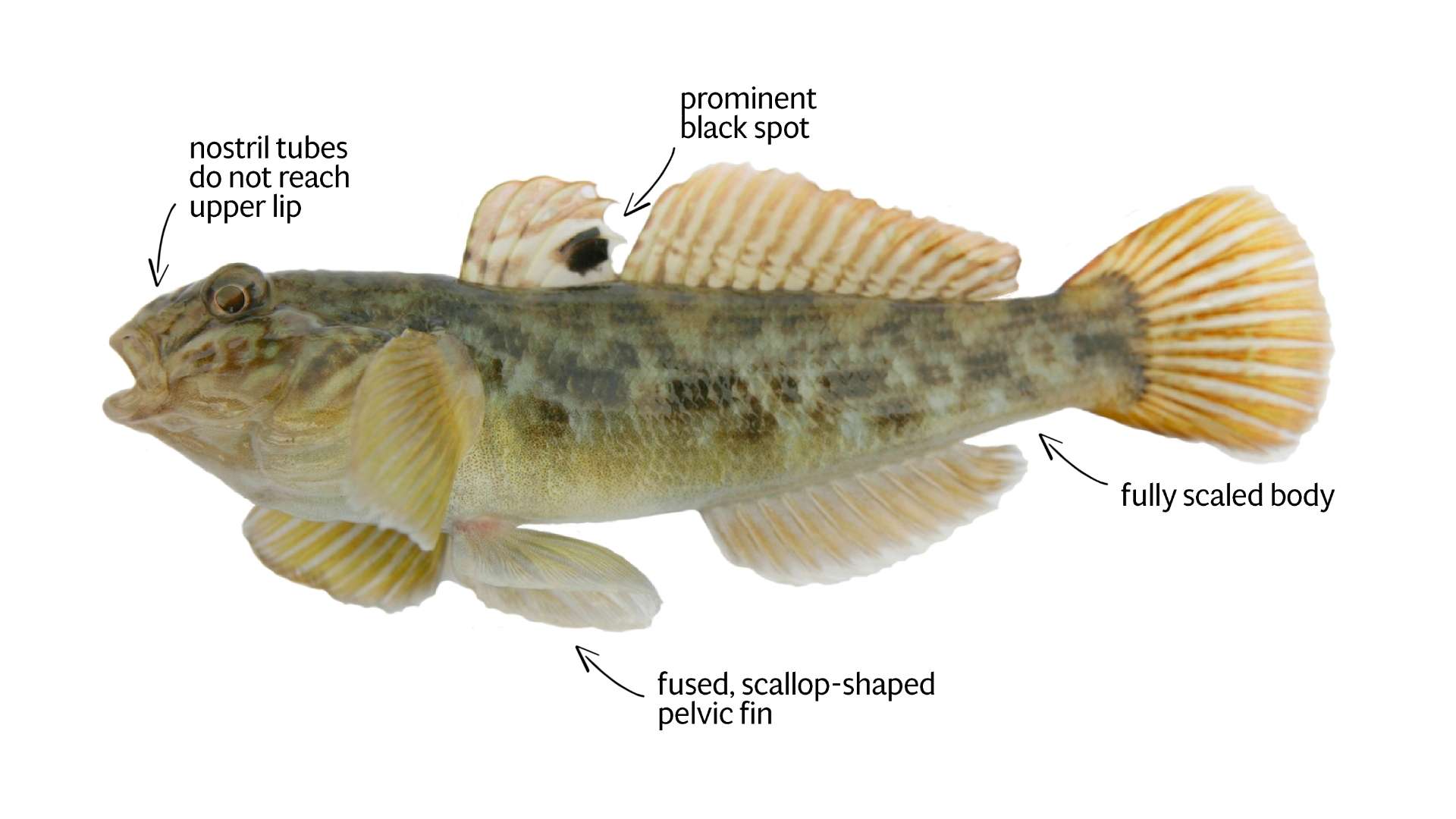
Round Gobies are a type of bottom-dwelling fish that are often found near-shore in areas of rock, cobble, sand, or rip-rap. They are mottled grey and brown, are 6-16 cm long with a cylindrical body, bulging eyes and blunt snout. They have a single suction-cup shaped pelvic fin and a black spot on the rear of their dorsal fin.
Round Gobies can reduce populations of other native fish by eating their eggs, young, and competing for space and food resources. They are also linked to botulism type E, which can impact fish-eating birds.
Phragmites
Phragmites australis subsp. australis
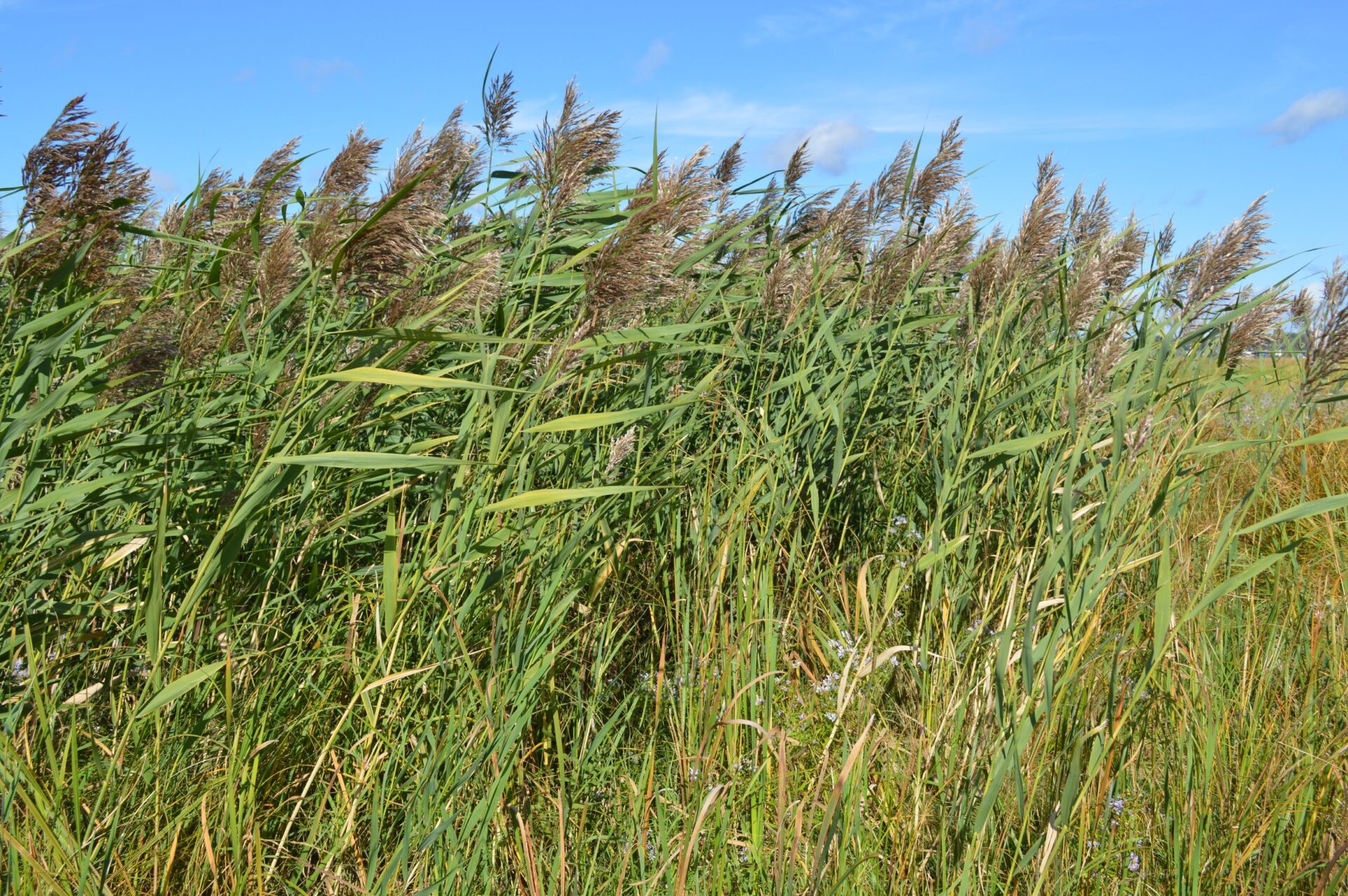
European Common Reed, better known as Phragmites, is a type of emergent reed that often inhabits ditches and riparian zones. These plants can grow 2-4 m tall, have rough ridged stems, and a dense cascading “broom-like” seed head that starts red in warmer seasons and turns tan during dormancy (fall-winter). It has long tapered leaves that are alternate in arrangement, 2-4 cm wide, and can be blue-green in colour.
Phragmites can grow in very dense stands, reducing space for native species to establish and making it difficult for wildlife (ie. turtles, amphibians) to traverse through them.
Zebra & Quagga Mussels
Dreissena sp.
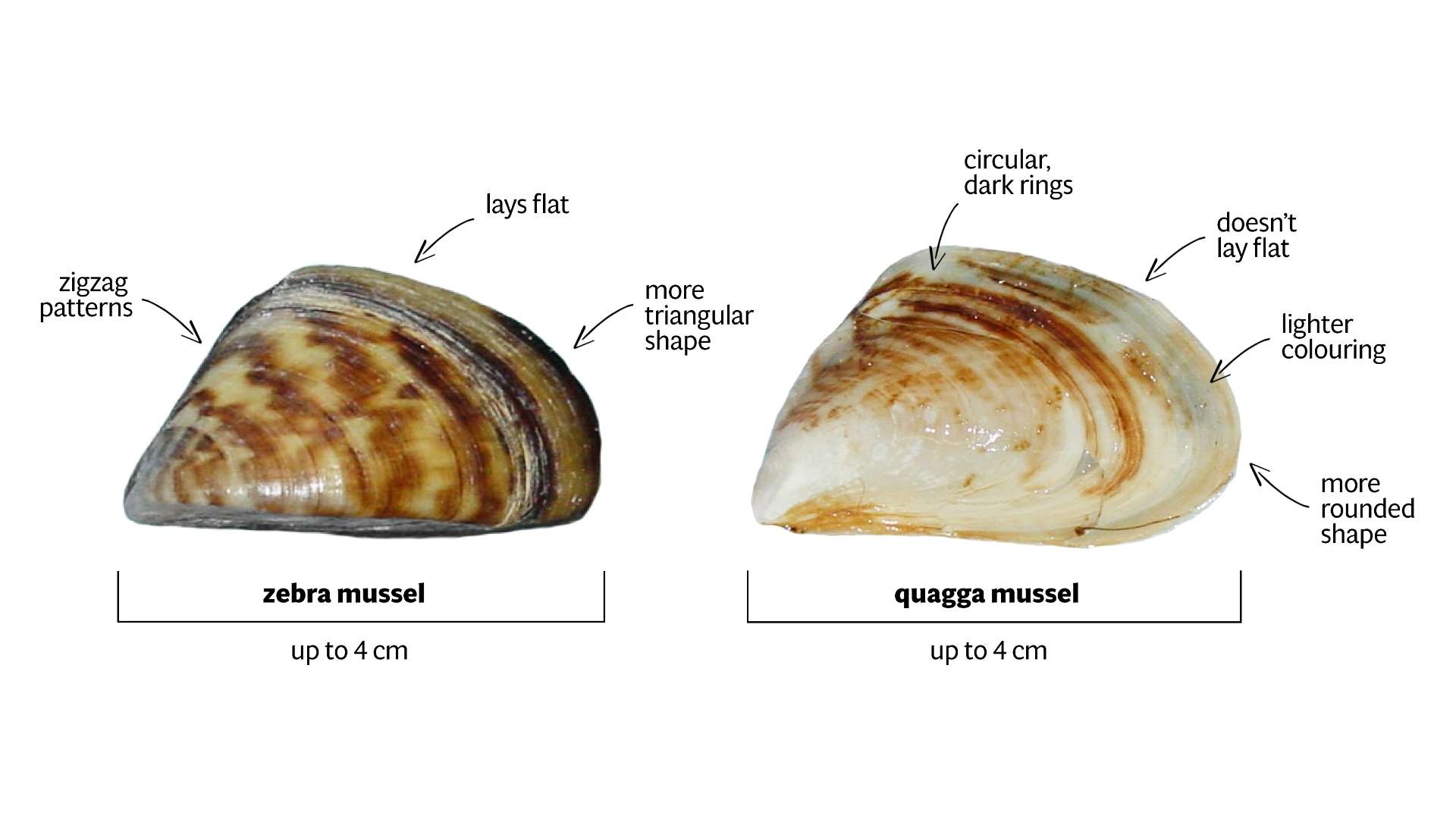
Zebra Mussels and Quagga Mussels are freshwater bivalves that are often found attached to hard surfaces in lakes, rivers, canals, and pools. Zebra Mussels sit flat and are triangular in shape with a striped pattern on the shell; Quagga Mussels are more round in shape and have concentric rings along their shell. They are usually 2-2.5 cm long.
Zebra Mussels can over-filter water of plankton, which reduce food sources for other native fish and bivalve species. Zebra Mussels can occupy prime spawning areas for many fish species, forcing them to relocate and compromise the survival of their eggs. Zebra and Quagga Mussels are also very sharp, which can severely injure swimmers and anglers if unnoticed.
I Think I Just Saw An Invasive Species!!!
What Should I Do Now???
First of all, DON'T panic and DO NOT try to remove it yourself without knowing for sure what you saw!
If you think you have an invasive species on your property, reference our Aquatic Invasive Species Guide to confirm your identification.
Report all sightings by either calling the Invading Species Hotline at 1-800-563-7711 OR by using EDDMapS Ontario, an online mapping tool to report invasive species in your area. If you can, take notes about the appearance and the location you’ve found the species and if it’s possible, try to snap a photo to upload to the online iNaturalist Invasive Species in Ontario project.
How Can I Get Involved in Monitoring for Invasive Species?
There are many opportunities to get involved with the identification, management, and monitoring of invasive species!
Check out some of the opportunities listed below to see if they are a good fit for you!
The Land Between Charity
Ontario Federation of Anglers and Hunters (OFAH)
Phrag Fighters!
Want to do your part in the fight against invasive Phragmites?
Check out Phragmites Fighters through The Land Between Charity!
Click the photo to the right to learn more about this program!
Ontario's Invading Species Awareness Program
Interested in learning about other programs to monitor and manage invasive species in Ontario?
Check out the Ontario Invading Species Awareness Program!
Click the photo to the right to learn more about their programs!
Want Some More Targeted Tips? Try These!
Learn about common local invasive species in your area through webinars, workshops, and other related events!
If you’re starting a garden or want something pretty to look at in the warmer months, plant native species that will be adapted to the environment and be usable by surrounding organisms!
Clean your boats! When moving your boat between different areas, be sure you are properly cleaning your bilge, hull, anchor, and anything else that has had contact with the water. Invasive species can hide in plain sight, so be as diligent as you can!
Incorporate “no wake zones” in areas where invasive species have been identified. Reducing waves and water movement can prevent fragmentation and reduce the spread of common aquatic invasive species like Eurasian water-milfoil.


